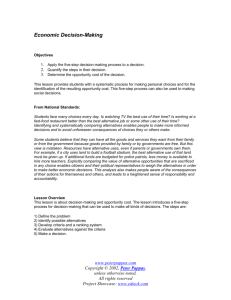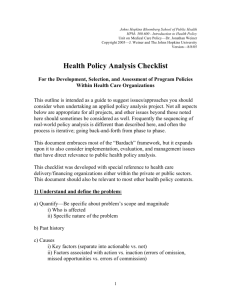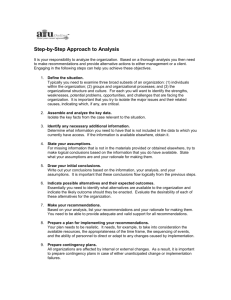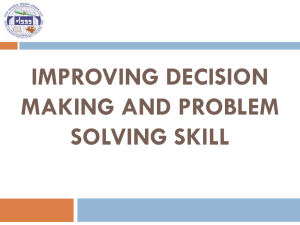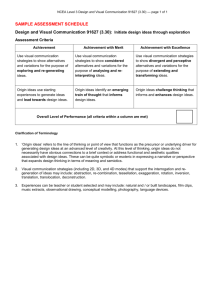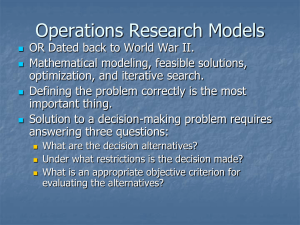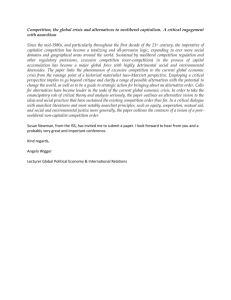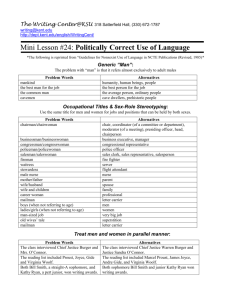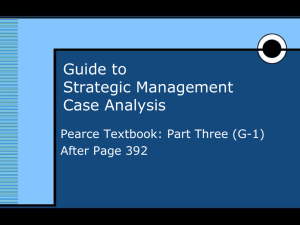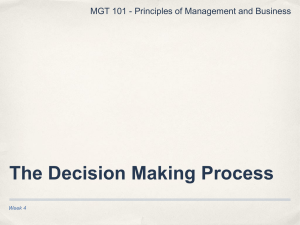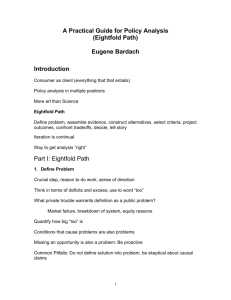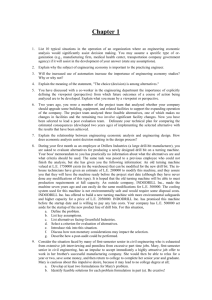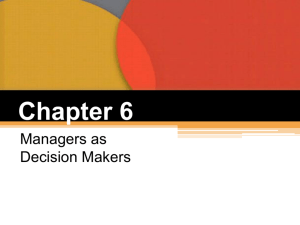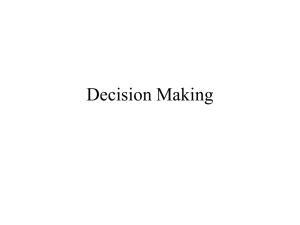Good Decision Making - Mississauga Halton LHIN
advertisement
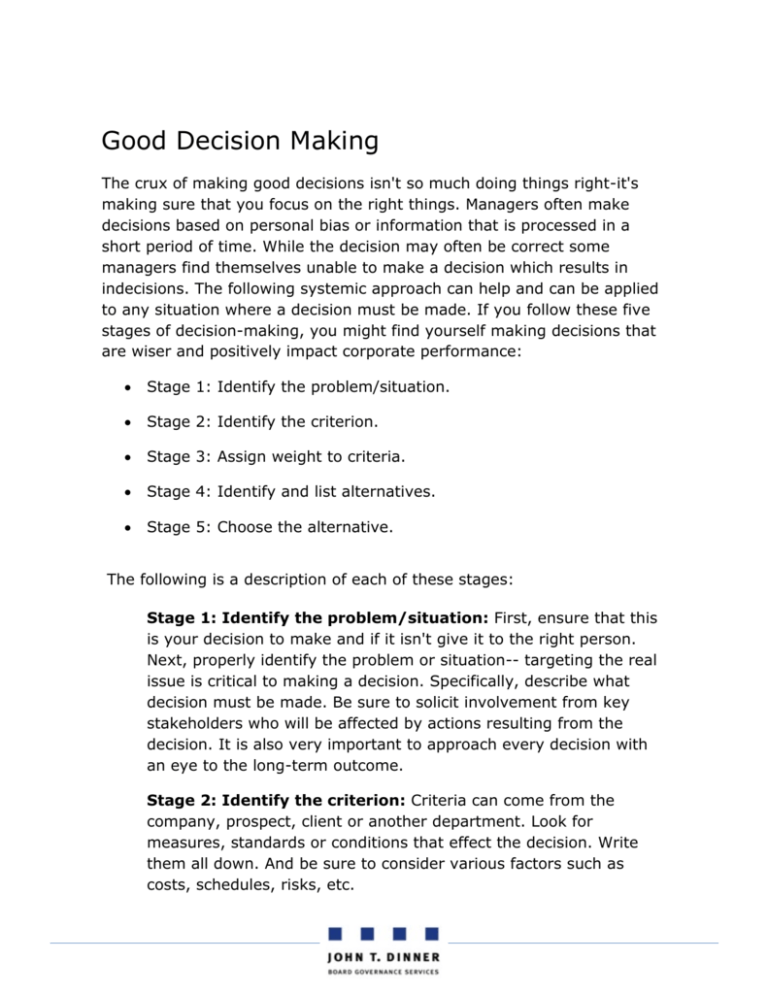
Good Decision Making The crux of making good decisions isn't so much doing things right-it's making sure that you focus on the right things. Managers often make decisions based on personal bias or information that is processed in a short period of time. While the decision may often be correct some managers find themselves unable to make a decision which results in indecisions. The following systemic approach can help and can be applied to any situation where a decision must be made. If you follow these five stages of decision-making, you might find yourself making decisions that are wiser and positively impact corporate performance: Stage 1: Identify the problem/situation. Stage 2: Identify the criterion. Stage 3: Assign weight to criteria. Stage 4: Identify and list alternatives. Stage 5: Choose the alternative. The following is a description of each of these stages: Stage 1: Identify the problem/situation: First, ensure that this is your decision to make and if it isn't give it to the right person. Next, properly identify the problem or situation-- targeting the real issue is critical to making a decision. Specifically, describe what decision must be made. Be sure to solicit involvement from key stakeholders who will be affected by actions resulting from the decision. It is also very important to approach every decision with an eye to the long-term outcome. Stage 2: Identify the criterion: Criteria can come from the company, prospect, client or another department. Look for measures, standards or conditions that effect the decision. Write them all down. And be sure to consider various factors such as costs, schedules, risks, etc. Stage 3: Assign weight to criteria: Weighting the criterion will help identify the relative value each carries to the decision you have to make. Stage 4: Identify and list alternatives: Brainstorm as many different alternatives as you can imagine. This is also a good way to use stakeholders, if appropriate. Let your imagination run free and try not to censure anything. This is not the time to be judgmental. Places where you can look for information are from company data, professional organizations, federal and state agencies, online services, newspapers, magazines, books and so on (see the above article). Stage 5: Choose the alternative: Evaluate alternatives based on the criteria previously identified. Picture what the outcome of each alternative would look like, identify which of the alternatives is most likely to happen, and choose the alternatives that best meet the values of your group and the company. Do evaluate them against potential risks. If you feel you can live with the alternative as well as the possible outcome, this is likely the decision you should follow. Decisions should also include periodic reassessments of the outcome to ensure you and your team is on track. Engage two-way, open communication among all the stakeholders so they will provide guidance, relevant information needed for assessment and provide buy-in for the new decision. Once you have made your decision, move forward and don't secondguess yourself. After all: You've considered and are aware of the risks, You've eliminated your own emotions and biases, And, you can more easily defend your decision because of the process you followed and the stakeholders you involved. Should the outcome not turn out to be exactly as you expected or you're not happy with it, you will have an easier time making changes, because stakeholders were involved in the process. With a clear blueprint for decision-making you should be able to see an improvement in corporate performance as well.


